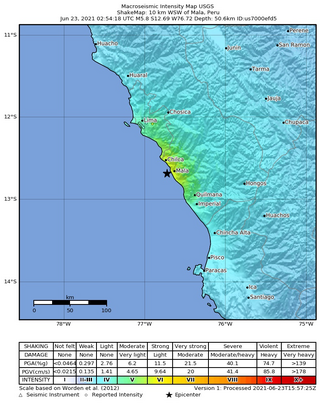
Costa Rican culture has been heavily influenced by Spanish culture ever since the Spanish colonization of the Americas including the territory which today forms Costa Rica. Parts of the country have other strong cultural influences, including the Caribbean province of Limón and the Cordillera de Talamanca which are influenced by Jamaican immigrants and indigenous native people, respectively.

Guanacaste is a province of Costa Rica located in the northwestern region of the country, along the coast of the Pacific Ocean. It is bordered by Nicaragua to the north, Alajuela Province to the east, and Puntarenas Province to the southeast. It is the most sparsely populated of all the provinces of Costa Rica. The province covers an area of 10,141 square kilometres (3,915 sq mi) and as of 2010, had a population of 354,154, with annual revenue of $2 billion.

Liberia is a district and the largest city in the Guanacaste Province of Costa Rica, located 215 kilometres (134 mi) northwest of the national capital, San José. Part of the Liberia canton, it is a major center for the country's tourism industry.

Nicoya is a district and head city of the Nicoya canton, in the Guanacaste province of Costa Rica, located on the Nicoya Peninsula. It is one of the country's most important tourist zones; it serves as a transport hub to Guanacaste's beaches and national parks.
Nicoya is a canton in the Guanacaste province of Costa Rica. The head city is in Nicoya district.

Santa Cruz is a canton in the Guanacaste province of Costa Rica. The head city is in Santa Cruz district.
Nandayure is a canton in the Guanacaste province of Costa Rica. The head city is in Carmona district.
Hojancha is a canton in the Guanacaste province of Costa Rica. The head city is in Hojancha district.

Puerto Carrillo is a district of the Hojancha canton, in the Guanacaste province of Costa Rica.

The 2010 Pichilemu earthquakes, also known as the Libertador O'Higgins earthquakes, were a pair of intraplate earthquakes measuring 6.9 and 7.0 that struck Chile's O'Higgins Region on 11 March 2010 about 16 minutes apart. The earthquakes were centred 15 kilometres (9.3 mi) northwest of the city of Pichilemu.

Asociación Deportiva Guanacasteca is a Costa Rican football team based in Nicoya, Guanacaste. They currently play in the Costa Rican First Division. Their home stadium is Estadio Chorotega.
Events in the year 2013 in Costa Rica.

Johanna Solano López is a Costa Rican TV Host, model, actress, triathlete and ex beauty pageant titleholder who represented her country at Miss Universe 2011 and placed Top 10.
Starting on December 28, 2019, and progressing into 2020, the southwestern part of the island of Puerto Rico was struck by an earthquake swarm, including 11 that were of magnitude 5 or greater. The largest and most damaging of this sequence was a magnitude 6.4 , which occurred on January 7 at 04:24 AST (08:24 UTC), with a maximum felt intensity of VIII (Severe) on the Modified Mercalli intensity scale. At least one person was killed, and several others were injured.

The 2021 Mala earthquake, with a Richter magnitude of 6.0 and moment magnitude of 5.9, struck on June 22, 2021, at 21:54:18 local time (UTC-5) with an epicenter off the coast of Mala in the department of Lima. Following the main event, there were more than 15 aftershocks, with the largest being a magnitude 4.8 event at 07:03 local time on June 23.
The 2010 Aguas Buenas earthquake, also referred to as the 2010 Christmas Eve earthquake, occurred on December 24 at 7:43 p.m. local time in Aguas Buenas, Puerto Rico. It measured 5.1 on the moment magnitude scale and had a maximum Mercalli intensity of VI (Strong). The event was the largest in Puerto Rico since May 16th of the same year, and the largest to impact the San Juan metropolitan area since 1975. The earthquake was felt throughout the island of Puerto Rico, the island municipalities of Vieques and Culebra, the American and British Virgin Islands, and even in the Dominican Republic across the Mona Passage.
The 1910 Costa Rica earthquakes were a series of destructive seismic events that affected Cartago, Costa Rica from 13 April to 4 May. The sequence began with a Ms 5.8 earthquake. The largest and most destructive in the sequence occurred on 4 May, measuring Ms 6.4. A total of 2,450 people were killed and the city of Cartago was severely affected.

On 19 September 2022, a moment magnitude 7.6-7.7 earthquake struck between the Mexican states of Michoacán and Colima at 13:05:06 local time. The earthquake had a depth of 26.9 km (16.7 mi), resulting in a maximum intensity of VIII (Severe) on the Modified Mercalli intensity scale. The USGS reported the epicentre was 35 km (22 mi) southwest of the town of Aquila. Two people were killed and at least 35 others were injured across several states. A magnitude 6.8 aftershock struck on 22 September, causing three more deaths.
The 1822 Costa Rica earthquake had an estimated surface-wave magnitude of 7.5–7.6 and struck the nation's Caribbean coast. The earthquake largely affected the country's east coast and generated a tsunami. Thrust faulting was inferred as a plausible mechanism for the earthquake and its damage pattern was similar to a 1991 shock of similar magnitude. Damage was also recorded in neighbouring countries.












